Rachel Neumeier's Blog, page 303
May 5, 2016
Favorite weapons in SFF
Here’s an interesting “Mind Meld” post at SF Signal: What are your favorite weapons in fantasy and science fiction?
Various writers and readers respond to that question, including Helen Lowe, ML Brennen, Courtney Schafer, Aliette De Bodard, Martha Wells, and a bunch of others.
Let me see, let me see . . . all right, I agree with Summer Brooks about the spetsdöd, from Steve Perry’s Matadors trilogy. Those are cool little dart-shooters that are mounted on the back of your hand. I liked them a lot in that series. Also, the word “spetsdöd” is cool.
Helen Lowe likes unconventional weapons, it seems. She doesn’t recall any magic swords, but does mention Morgan’s harp in the Riddlemaster trilogy. You remember sounding the low string would shatter weapons, right? Yeah, that’s pretty cool. She also mentions “…the gauntlet that the smith, Elof, creates in Michael Scott Rohan’s The Anvil of Ice, although in this case it was intended as a weapon from the outset. Crafted from steel and magic, the gauntlet can grasp any force sent against its wearer, gather it – and send it back.” That caught my eye because I have that book in my sample folder.
Loren Rhoads mentions the Presgar gun in Anne Leckie’s Ancillary trilogy. That’s a great choice! I am figuratively jumping up and down exclaiming “Me, too!”
For me, hmm. Other than the above . . .
I never really cared for most of Jack Vance’s books, but I liked the Lyonesse trilogy — and the magic sword. What was it called? Dassenach or something like that, I think.
And from Cherryh, Morgaine’s sword Changeling. That is one scary sword.
I have just been re-reading bits of MWT’s Attolia books, so I will add: Gen’s hook. For him, that is a pretty potent weapon.
How about you all? Got a particular favorite weapon in mind?

May 4, 2016
Self-Published Fantasy Blog-Off, Year 2
I see from dropping in at Bibliotropic that Mark Lawrence has organized a second round for his self-published fantasy novel blog-off.
Let’s see — looks like 300 entries, all either stand-alones or first in a series. Ten bloggers are participating, so for the first round, every blogger gets 30 books. How they deal with all those is up to them, except they have to put just one forward as a finalist.
Ria at Bibliotropic is starting off by just taking a look at her thirty, six at a time — title, cover, back cover. She’s got eighteen up so far.
Of the eighteen, my favorite title is The Dragon Scale Lute. Dragons, music, sounds good! I also like the cover:
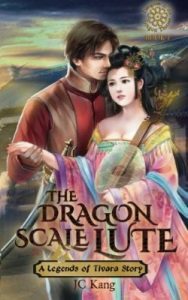
Pretty, colorful. The woman’s expression is perhaps a bit vapid, but on the other hand, she *is* holding a lute. I definitely prefer this to a lot of the darker, more monochromatic covers.
Let me see, looks like the other participating bloggers this year are:
Bookworm Blues / Sarah Chorn
Fantasy Book Critic / Mihir & crew
Elitist Book Review / Steve Diamond & crew
Pornokitsch / Jared & crew
Lynn’s Books / Lynn
The BiblioSanctum / Tiara, Mogsy & Wendy
The Qwillery / Sally Janin & crew
Fantasy Literature / Kat Hooper et al
Fantasy-Faction / Marc Apin & chums
I don’t remember exactly who participated last year, but I certainly see several I know did.
Bookworm Blues is also taking an initial look at cover art. For hers I lke the cover and title for The Blood-Tainted Winter, though the book itself might well be too grim for my taste.
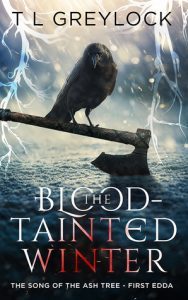
BiblioSanctum has a brief introductory post up, showing thumbnails of all thirty of their titles. That really shows you how hard it can be for a cover to stand out amid a whole bunch of tiny little thumbnails. I will click through to just one . . . all right, I rather like this one: A Journey to Kokorue.
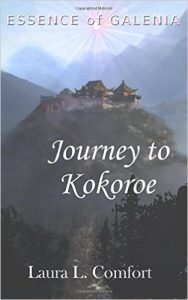
The others don’t seem to have done introductory posts yet. Well, I’ll try to remember to check in from time to time and see what’s going on with this. I did pick up a couple of titles from last year’s SPFBO, but (of course) haven’t actually read them yet . . . maybe I will manage to do that before this year’s finalists are chosen.

2016 Locus Awards
Update: Well, thanks, Linda, that makes a lot more sense! The link I used was from tor.com and it took me to last year’s list . . . yes, checking, it still takes you to last year’s list. Here are the actual 2016 Locus Award Nominees:
SCIENCE FICTION NOVEL
The Water Knife, Paolo Bacigalupi
Ancillary Mercy, Ann Leckie
Aurora, Kim Stanley Robinson
Seveneves, Neal Stephenson
A Borrowed Man, Gene Wolfe
FANTASY NOVEL
Karen Memory, Elizabeth Bear
The House of Shattered Wings, Aliette de Bodard
Wylding Hall, Elizabeth Hand
The Fifth Season, N.K. Jemisin
Uprooted, Naomi Novik
YOUNG ADULT BOOK
Half a War, Joe Abercrombie
Half the World, Joe Abercrombie
Harrison Squared, Daryl Gregory
Shadowshaper, Daniel José Older
The Shepherd’s Crown, Terry Pratchett
FIRST NOVEL
Sorcerer to the Crown, Zen Cho
The Grace of Kings, Ken Liu
Signal to Noise, Silvia Moreno-Garcia
The Watchmaker of Filigree Street, Natasha Pulley
The Sorcerer of the Wildeeps, Kai Ashante Wilson
NOVELLA
Penric’s Demon, Lois McMaster Bujold
The Citadel of Weeping Pearls, Aliette de Bodard
The Four Thousand, the Eight Hundred, Greg Egan
Binti, Nnedi Okorafor
Slow Bullets, Alastair Reynolds
NOVELETTE
‘‘The Heart’s Filthy Lesson’’, Elizabeth Bear
‘‘And You Shall Know Her by the Trail of Dead’’, Brooke Bolander
‘‘Black Dog’’, Neil Gaiman
‘‘Folding Beijing’’, Hao Jingfang
‘‘Another Word for World’’, Ann Leckie
SHORT STORY
‘‘Three Cups of Grief, by Starlight’’, Aliette de Bodard
‘‘Madeleine’’, Amal El-Mohtar
‘‘Cat Pictures Please’’, Naomi Kritzer
‘‘The Dowager of Bees’’, China Miéville
‘‘Hungry Daughters of Starving Mothers’’, Alyssa Wong
Not too many surprises there. Pretty good list, I think, as far as the ones I’ve read. I’m particularly pleased to see “Cat Pictures, Please,” though disappointed not to see anything by Ursula Vernon.

May 3, 2016
Concept vs Premise
Here’s an interesting post by Larry Brooks at Kill Zone Blog: Concept vs. Premise: The Inherent Opportunity in Understanding the Difference
I’ve read this rather long post once and need to read through it again. My first thought is: I think I agree about the difference between concept and premise, but I don’t think I agree about which genres are particularly concept driven.
Brooks asserts:
Relative to story development, concept, as it relates to premise, is the contextual framework for a story. A notion that infuses the premise with compelling energy. A proposition.
I think I have also seen “high concept” defined as “summarizable as one particularly catchy sentence.” Like: “A man is stranded alone on Mars and has to survive an impossible length of time to have any hope of rescue.” I suppose what is seen as particularly catchy depends on who’s listening to the pitch.
And then it’s clear that Brooks is basically using “premise” to mean “plot summary.” When he’s discussing premise, he offers a generalized description of a plot, the sort of thing you would see in a query letter.
Anyway, here’s the bit that particularly caught my eye:
When we read that agents and editors are looking for something fresh and new, concept is what they mean. When a concept is familiar and proven – which is the case in romance and mystery genres especially – then fresh and new becomes the job of premise and character, as well as voice and narrative strategy.
And again, later:
Literary fiction and some romance and mysteries aren’t necessarily driven by concept, yet they are totally dependent on a premise that gives their hero’s something to do. Which can and should be conceptual in nature.
However, the sub-genres of romance – paranormal, historical, time travel, erotica, etc. – are totally concept-dependent. Other genres, such as fantasy and science fiction and historical, are almost totally driven by and dependent upon concept.
What about that? Agree, disagree? I’m almost sure I disagree. That is, obviously SOME SF novels are very strongly concept-driven; Kim Stanley Robinson comes to mind here, and probably works like Seveneves, not that I’ve read it, but that’s the point, you just glance at the back cover and think, Wow, high concept here.
A catastrophic event renders the earth a ticking time bomb. In a feverish race against the inevitable, nations around the globe band together to devise an ambitious plan to ensure the survival of humanity far beyond our atmosphere, in outer space….Five thousand years later, their progeny—seven distinct races now three billion strong—embark on yet another audacious journey into the unknown . . . to an alien world utterly transformed by cataclysm and time: Earth.
So, I guess that’s two high concepts in Seveneves.
But I’d argue that character and voice are primary, not secondary, in a LOT of SF and perhaps the majority of fantasy. I’m getting the feeling that Brooks, like so many others, is treating SF as though it’s always plot driven and high concept, when it isn’t necessarily so — adventure fantasy is often very dependent on character and narrative. I also stuttered over defining paranormal as intrinsically high concept; I think that’s a subgenre that particularly emphasizes character and voice.
And then I think Brooks is conflating SF and fantasy, which I think is a mistake.
Still, it’s an interesting post and I do want to read it again more carefully and think about the main point Brooks is making, which is that the more high-concept our stories are, the more likely they are to appeal to agents, editors, and a broad audience of readers. One does notice that Seveneves appears to have done just that …

May 2, 2016
Finished! Again! For a while…
So, YAY, just sent off The Dark Turn of Winter to my editor. Though I’ve revised the book twice now, this will actually be Navah’s first look at the manuscript, always a nervous time for a writer. Caitlin really likes this one and talked it up and I hope Navah feels the same way, but doesn’t have super-exaggerated expectations . . . like I said, a nervous time.
Anyway, I have posted a lot of novel beginnings recently, so I thought I would post the beginning of Dark Turn. But which beginning? There is a prologue . . . very short! For all I know it will not appear in the finished version! But at the moment there is a prologue.
In general, when posting the beginning lines of a novel, I skip prologues — unless the prologue is very long and thus acts as the first chapter; or is particularly interesting in some way, like the prologue in Beauty Queens by Libba Bray. Still, the prologue is always the first part the reader sees. Unless the reader is someone who automatically skips prologues. Which I don’t personally recommend; imo if the writer is good, the prologue will be good; and if the prologue is deeply boring and/or completely unimportant, then the rest of the book isn’t likely to be very good either.
So, post a snippet from the prologue? Or from the first chapter? And, you know, Chapter One is from the pov of one primary protagonist, while Chapter Two switches to the pov of the other primary protagonist. There are four pov characters, btw, and as a result the book is quite long; one of the few I’ve written that I think might be justifiably called epic fantasy. Again, many things including the length are subject to change depending on my editor’s take on the book. Still, long. My average length is 120,000 words and this one is 184,000 (and its top length before the final cut was a whopping 197,000 words).
Anyway, here’s what I’m going to do: a snippet from the prologue and from each of the first two chapters. See what you think!
+++++++++
Prologue
Jeneil inè Suon was a beautiful girl. Her beauty did not serve her well: not as a child in her father’s house and not in her youth and certainly not when, as a woman grown, she caught the eye of Iheraïn terè Iönei Eänetaì. The Iron Duke, the Wolf Duke, the Black Duke: Iheraïn Eänetaì, possibly the cruelest of all the lords of Pohorir. For generations a savage disposition had echoed back and forth between the Dukes of Eäneté and their Immanent Power, until cruelty no less than molten fire burned beneath the stone of the province’s mountains.
Don’t get attached. Janeil dies in three pages and we leap ahead twenty years.
++++++++++
Chapter 1
When he was fourteen, Innisth terè Maèr Eänetaì tried for the first time to kill his father. He did not succeed. He found out instead something that he should have realized beforehand: that the Immanent Power of Eäneté protected its master from any ordinary attack. Even an unexpected attack. Even an attack by the heir. Innisth also learned that it is a great deal easier and less painful to discover such things through logic than through trial and error. Both lessons proved useful, in time.
Innisth survived his father’s punishment, and the subsequent years of his youth. When he was twenty, he tried again to murder his father. This time he succeeded. This time he thought out his plan with cold deliberation, and, when the opportunity presented itself, on the twenty-eighth day of the Month of Wolves, he seized his chance.
Innisth is Jeneil’s son, of course. This chapter, which I really love and I trust you will eventually see in essentially its current form, takes place seven years before the real opening of the story and thus could be seen as a second prologue.
+++++++++++
Chapter 2
The sixteenth day of Fire Maple Month offered a bright and pleasant autumn morning, here in the garden of the house of Liyè Cemeraiän, Lord of Cemerè, where Kehera irinè Elin Raëhema kept company with Soë Cemeraiän while they both waited for day’s end. The breeze was soft and warm, wisps of cloud chased one another through the brilliant sky, and, from the garden, the fighting along the river was only barely audible.
Lotsa names, I realize. Honestly, each chapter gives you a chance to get used to the important names before moving on.
When I wrote The Keeper of the Mist, I was still recovering from certain readers’ inexplicable distaste for complicated names. Hence the very short and extremely pronounceable names in that book.
By the time I wrote Dark Turn, I had recovered, as you can see. Also I had discovered the keyboard shortcuts for accent marks, which are very cool. However, the naming conventions in Dark Turn are not as complicated as they may look at first glance. Also, I will provide a pronunciation guide if Navah thinks that would be a good idea, though as always I don’t care a bit how readers pronounce the names.
++++++++++
Seasons in the world of Dark Turn
I thought you might all be interested in where the idea of hinges and iron hinges and so on came from, back when I was soliciting advice on the title, so let me add that Caitlin found the timing of events confusing, so I added months by name and poured all the action toward midwinter; that is, the winter solstice, our December 21st, which is the end of the year in Dark Turn.
You know how we alternate months with 30 and 31 days and then fiddle around with leap years. Well, that is kind of sloppy, especially if you’re the sort of person whose memory runs more to: 30 days hath September, all the rest I can’t remember.
So, in the world of The Dark Turn of Winter, every month is 30 days long, but there are two “hinges” in the year: periods of approximately four days that aren’t counted as exactly part of any month, centered around the solstices. The Golden Hinge of the year is a lucky (if somewhat risky) time centered around (obviously) our June 21st. Particularly daring couples get married during the Golden Hinge Month.
Obviously, then, the Iron Hinge of the year is centered around the winter solstice. The whole Iron Hinge month is considered unlucky, and the Iron Hinge days are actually and definitely VERY unlucky, as the storms that come down across the land at that time are not your typical blizzard. Monstrous winter dragons ride the black winds of those storms, and all ordinary creatures take shelter until the year turns . . .

April 29, 2016
I will wake in the eyes of their children’s children
Here is a touching post by Laura Anne Gilman at Fantasy Book Cafe, about the influence of her father on her writing.
But it wasn’t until I began writing SILVER ON THE ROAD, the first of the Devil’s West novels, that I consciously sat down to think about what it meant to be a daughter to a father, to have that strangely powerful influence on every element of who you are, and all the ways it can go both wrong and right, even with the best of intentions and the most heartfelt of affections.

Omniscient Viewpoint
Here’s an interesting post by Ann Leckie about omniscient viewpoint.
The other day, while I was reading a (published) work of fiction, I came across a passage that seemed to me was a result of the author being determined to write the piece in 3rd person limited, but wanting very badly to do something that would have benefited very much from the piece being in omniscient POV. Instead, the author had kluged together an awkward workaround.
Yes, I can imagine the kind of thing Leckie means. So can you all, I’m sure.
This part, however, took me a bit by surprise:
I would have been a bit less dismayed to see such a thing if it had not been for the context of the way new writers are nearly always taught about POV. I’ve not infrequently seen advice to avoid omni altogether, either because it’s difficult and therefore only for experts, or because readers aren’t used to it, or because editors won’t or don’t buy works using that POV. Specific advice for handling POV is nearly always advice for handling 3rd person limited, though it’s often articulated only as advice for handling POV, period.
No doubt this is true somewhere, for some new writers, but I wish Leckie had said exactly what she was thinking of when she write this indictment. What did she mean, “new writers are nearly always taught”? Are “most” new writers “taught,” as such? Taught by whom? Do most new writers go through MFA programs these days? I’m thinking of genre authors here. Certainly no one taught me anything about writing, except the authors of the books I read. Orson Scott Card’s book, Character and Viewpoint, is good and potentially useful, I guess, except that I don’t think books about writing are actually all that helpful. Interesting, yes. Helpful, not so much. And he doesn’t declare that limited third is the only real way to go. Are all the more recent books of writing advice making such a claim? Maybe they are, I don’t know.
Anyway, this took me by surprise because we see so much genre fiction written in the first person these days, which is not acknowledged at all in the linked article. First is way more common today than it was thirty years ago, it seems to me. Including of course the first-person-present, which I think is pretty difficult to do well, but it’s certainly not rare these days. I wonder if Leckie is not reading much UF/paranormal/YA, because it seems to me that she could not write about the ubiquity of limited third person if she was reading widely in those areas, where first is at least as common as third.
It especially surprised me because her own Ancillary trilogy is written in the first person, I do wonder why she didn’t address that, but limited the options under discussion to limited third versus omniscient. But leave that aside.
It’s true that in many discussions about viewpoint, third-person headhopping omniscient is conflated with true omniscient. I can think of a couple of books that used head-hopping third really well, which — as Leckie indicates — can be very difficult to pull off. I’m thinking of Judith Riley’s Margaret of Ashbury trilogy here. But true omniscient? That would be something like The Book Thief, with a narrator who is standing outside the action and seeing everything. I really enjoyed The Lovely Bones, as I recall.
Here’s Leckie’s conclusion about how to write omniscient well:
But it’s really very simple. Omniscient always has a narrator . . . the story is always being told from the POV of that narrator, who just happens to know a whole lot about the circumstances of the story, for whatever reason. They’re telling you the story, commenting on it, judging it, maybe even making snarky remarks about it. But the story is being filtered through the perceptions of that narrator.
True? Mostly true? What are a couple more recent SFF novels written in omniscient? Remembering that omniscient is not the same as headhopping third person, does anyone have an example of a story written in true omniscient? Does it stick to the above rule about having a narrator (named and personified or not)?
I guess the number of possible pov techniques gets pretty long if you try to break them all down. Like this:
First person present — like Divergent, say.
First person past — a lot of paranormal/UF/cozy mysteries
First person past with a frame story — The Taltos series by Stephen Brust
Limited third person — a lot of genre fiction, including all of mine so far
Close third person — CJ Cherryh writes in a particularly close third person, I think, and it seems distinct from a more typical limited third to me.
Head-hopping third — very rarely done well, where you may dip into different characters’ heads in one chapter, or even one scene. Judith Riley.
Omniscient — The Lovely Bones
Do we see any present-tense narratives in any pov other than first?

April 27, 2016
Nonfiction for poetry lovers
… And when I say “nonfiction,” I don’t mean memoir, which reads exactly like fiction. Nor true crime, nor anything else that is basically structured like a novel. I mean nonfiction that could not possibly be mistaken for fiction.
I have here a Top Five list of the nonfiction books I have in my house that I think are particularly likely to appeal to readers who love language and particularly readers who enjoy poetry. Which is not to say these books are much like one another, because no. They vary widely in subject and style. Even so, I think they all fit this list.
So, for example:
1) JE Gordon’s Structures: Or Why Things Don’t Fall Down, a wonderful book about materials science. I drew on this book very heavily to write Tehre in Land of the Burning Sands. Tehre is the woman she is solely because this book happened to be sitting on my coffee table while I was thinking about what to do with the sequel to Lord of the Changing Winds.
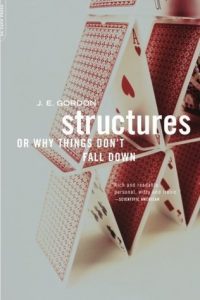
And why did I read this book in the first place? Not because I meant to use it as background for a novel, but because it was fun to read, even though I have no particular interest in materials science. And the reason, or one reason, it was fun to read is that Gordon clearly loves poetry and literature, and worked that into this book, which is about as far from a textbook as can be imagined while still explaining stuff about materials science. As he writes, Gordon incorporates quotes from the Bible and Sophocles and Coleridge, on and on. But even when he isn’t directly quoting, Gordon certainly doesn’t write as though he writing a textbook. His dry sense of humor is always evident, as for example here:
Like many official explanation, this [about why stuff doesn’t break when in theory it should] has the merit of being at least partly true, though in reality it is very far from being the whole story. In many cases the stress concentration is by no means fully relieved by the ductility of the metal, and the local stress does, in fact, quite often remain much higher than the commonly accepted “breaking stress” of the material as determined from small specimens in the laboratory and incorporated in printed tables and reference books.
For many years, however, embarrassing speculations which were likely to undermine people’s faith in the established methods of calculating the strength of structures were not encouraged. When I was a student, Inglis’s name was hardly ever mentioned and these doubts and difficulties were not much spoken about in polite engineering society. Pragmatically, this attitude could be partially justified, since, given a judiciously chosen factor of safety, the traditional approach to strength calculations could generally be relied upon to predict the strength of most conventional metal structures. In fact, it forms the basis of nearly all of the safety regulations which are imposed by governments and insurance companies today.
However, even in the best engineering circles, scandals occurred from time to time. . . .
Okay, maybe this writing style might not appeal to everyone, but for me this was an incredibly readable book, especially considering my basic lack of interest in the subject. Plus, all through the book we have charming tidbits like this:
Children, you are very little
And your bones are very brittle;
If you would grow great and stately,
You must try to walk sedately.
A bit of doggerel from RL Stevenson’s A Child’s Garden of Verses, about which Gordon observes, “But, of course, the bones of children are not very brittle and Stevenson was writing rather charming nonsense. . . . Naturally, young children are mechanically vulnerable, but on the whole they tend to bounce rather than break, as one can see on any ski-slope.” Then he goes on to explain the development of bones and relate this to Young’s modulus and so on, because Gordon isn’t just interested in materials like metals, he’s interested in biological materials, too.
For the fantasy writer, Structures is especially inviting because there’s a lot of stuff about catapults and bows and trebuchets and so on, as well as explanations of why it’s a good idea to put a lot of heavy stone gargoyles along the tops of walls and so on. When I think Nonfiction For Poetry Lovers, this one pops right to mind. Also when I think of Useful Background Reading for Fantasy Authors.
2) Another beautifully written book that touches on all kinds of topics related to science and history, is the collection of essays by Evan S Connell, The White Lantern, first published in 1980..
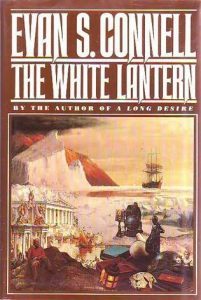
Astronomy, linguistics, archaeology, exploration . . . these are wonderfully entertaining, and it’s the lively style that makes them so. Like this, about the mysterious Etruscans:
So often with Etruscan artifacts one does apprehend these long reverberations from Asia. Nevertheless, a good many prominent archaeologists refuse to buy Herodotus’ account; they consider it a fable. They reject the idea of an immense migration – half a nation sailing into the sunset – and insist unromantically that the Etruscans were natural descendants of some Italian farmers. What a gray thought. It’s like being told the Kensington runestone is a fake – that the bloody tale of a battle between Indians and Vikings in upper Minnesota never took place. One wants to believe.
Among the cold-blooded exponents of this autochthonous theory, none is chillier than Massimo Pallottino, professor of Etruscology and Italic archaeology at the University of Rome. Indeed, Professor Pallottino sounds exasperated that other professionals could be wrongheaded enough even to contemplate the migration hypothesis, which he goes about dissecting with meticulous disdain and a glittering assortment of scalpels.
Honestly, whatever your particular hobbies or interests, it’s hard to imagine you wouldn’t find something to love among these essays. The account of various journeys, successful and otherwise, to the South Pole, is particularly if horrifyingly compelling. This essay is absolutely certain to make you appreciate your comfortable home, which I presume is not situated at the South Pole and is therefore definitely, whatever its possible defects, comfortable in contrast. This essay also contributed the pithiest statement about luck I’ve ever seen, from Roald Amundsen: “Victory awaits those who have everything in order. People call this luck. Defeat awaits those who fail to take the necessary precautions. This is known as bad luck.”
As a side note, you know who that makes me think of? Janus bet Vhalnich in The Thousand Names by Django Wexler. I bet he and Amundsen would have gotten along.
Okay, a third nonfiction title that is particularly wonderfully written, and which I think I mentioned in another context recently, is:
3. The Essential Earthman by Henry Mitchell, and other books of his collected essays about gardening.
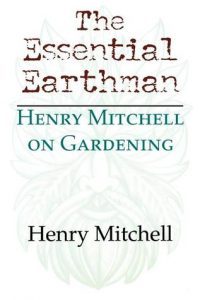
All of the essays in these books are quite splendid because of Mitchell’s unique way with words. Opening The Essential Earthman completely at random, I find this wonderful bit about clematis, which catches my eye because I was just pulling out the grasses that are crowding the two I planted last year. It is too long to quote in its entirety, but on the other hand one doesn’t want to leave out any particularly wonderful bits, so let’s see:
Clematis may be planted in March in a sunny place (but well shaded at their roots by a shrub or stone) and there are only two problems:
— Which, among the dozens of sorts, to choose.
— How to make the dratted things grow.
The first problem, which kinds are most beautiful, may be glossed over, since they are all pretty glorious, but the second question – how best to grow them – will require several minutes of effort on the gardener’s part. It should be said, though without any intention of adding to the world’s already adequate store of guilt, that the average gardener is surprisingly lazy and, not to split hairs about it, pigheaded. Every book in Christendom says the ground should be “well-prepared” or “well-dug” or “in good heart” or “well-drained” and “reasonably full of humus.” The gardener, therefore, having thought about these things all winter, leaps forth in March, about the time the very first daffodils are blooming, to chop a hole the size of a coffee can in some godforsaken spot encumbered with couch grass and plops in his clematis or rose or what not, and sits back to await the promised splendor. . . .
Yeah, I wouldn’t know anything about that. Mitchell goes on a bit later,
Now there is the matter of clematis wilt. This is a disease that can carry off a clematis plant in the matter of a few days and it is, needless to say, the strongest argument against divine providence I can think of. Some put their faith in benomyl sprays and drenches. But it would be sheer perversity to worry so much about wilt (from which the clematis often recovers if you do absolutely nothing) as to forego the pleasure of growing these happy vines.
I don’t know how many plants I have because of Henry Mitchell. The clematis, to start with, and the Yulan magnolia (which he called supremely beautiful, and I agree) and the sophora (S. japonica), which fortunately seems to have survived our sharp April freeze this year, though it certainly did not appreciate that and had to start over leafing out.
Let me also remind you to admire the dogwoods quick while there’s still time. They have been quite something this spring, but probably won’t last another week here. Here is what Henry Mitchell says about them:
It is important, I read somewhere, for us to keep a picture image in our mind of something perfect, just in case there might be bumps, so to speak, along life’s highway. Nothing, probably, serves that purpose any better than the dogwood.

Okay, so, moving on to a book I love very much that I doubt is as widely known as it deserves – of course that is true for all these books –
4. Should You Leave? by Peter Kramer, published in 1997.
Should You Leave? is a most peculiar book.
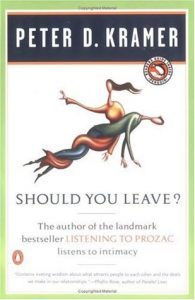
It is sort of fictionalized nonfiction. The frame story is fictional, the individual cases are fictionalized, a bit of nonfiction commentary can suddenly turn out to be another kind of story, only you didn’t realize there were multiple layers to the commentary until long after you read that bit.
This is sort of an advice book, sort of a behind-the-scenes look at how a psychiatrist views psychiatry, sort of a history of psychiatric thought. As you no doubt infer from the title, it’s a book about relationships, but it is extremely . . . what is the word . . . indirect? Ambiguous? It’s structured as carefully as poetry, certainly. It takes one point of view and then another, and then recasts both, in a way that is guaranteed to make the reader look at a situation one way and then in a completely different way.
Kramer uses metaphors as though he’s writing poetry. He shows you why a metaphor is apt. Then he extends the metaphor, then he shows you why it doesn’t really apply after all, then he shows you that it really does apply, sort of.
It’s difficult to take a quote out of context. The whole book is so tightly written in context. I keep trying to take a tidbit out and deciding, not that one. However, how about this?
The moral of the typical stories of our culture is that the true marriage requires, as a precondition, the achievement of some hidden potential – call it adulthood – that can emerge in the course of negotiating the relationship. We have dramas of marriage and remarriage, couples meeting first as dependent, proud, selfish, unformed pseudo-adults and then, after an adventure, rejoining as differentiated selves. Shakespeare’s comedies often have this form. Stanley Cavell would trace the story to our earliest literature – when are Adam and Eve, and their marriage, complete?
So you see, Kramer is explicitly drawing on literature as he frames this . . . advice . . . book.
If the above description is intriguing and you still think so after looking at the cover copy on Amazon or wherever, pick it up and just try it. I would kind of suggest not opening it at random and dipping into it wherever. This book is probably best read straight through, the way the author structured it.
One more:
5. Pilgrim at Tinker Creek by Annie Dillard.
I have several books by Dillard, and honestly I don’t know how to describe them. You could say, like it does on the back cover, that Pilgrim is “the story of a dramatic year in Virginia’s Blue Ridge valley,” but although that’s true, in a way, it is also almost totally misleading.
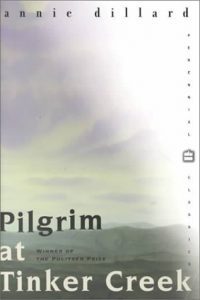
You could say that this book, like some of her others, is a series of linked essays that touch not only on observations of the natural world, but on observations of the transcendent. Or you could say, and I think this is closer, that Dillard is trying to capture the transcendent via meditations on the natural world. But I think it is closer still to say that Annie Dillard is trying to capture the transcendent within the lines of poems that happen to be in the form of mediations on the natural world. Here she reaches almost directly for the transcendent:
I saw the backyard cedar where the mourning doves roost charged and transfigured, each cell buzzing with flame. I stood on the grass with the lights in it, grass that was wholly fire, utterly focused and utterly dreamed. It was less like seeing than like being for the first time seen, knocked breathless by a powerful glance. The flood of fire abated, but I’m still spending the power. Gradually the lights went out in the cedar, the colors died, the cells unflamed and disappeared. I was still ringing. I had been my whole life a bell and never knew it until at that moment I was lifted and struck. I have since only very rarely seen the tree with the lights in it. The vision comes and goes, mostly goes, but I live for it, the moment when the mountains open and a new light roars in spate through the crack, and the mountains slam.
I read that quote, or some part of it, when I was a teenager. It stuck with me. I looked up this book one day when I happened to recall that one line out of the blue – you can probably pick it out of the above – I mean: I had been my whole life a bell and never knew it until at that moment I was lifted and struck. Then, once Pilgrim arrived, I read it a little at a time, as one should read poetry, which is more dense than prose. I still love this passage, but there are many such passages and I could have opened the book practically anywhere and started quoting.
This is also a book that makes it clear how very different our experiences of life can be. I think I have almost nothing in common with Annie Dillard. I suspect Emily Dickenson would have understood her better than I do, and I suspect that if you love Dickenson’s poetry, you might be likely to love Dillard’s prose.
So, that’s five wildly different nonfiction titles. Anybody got another nonfiction titles – remember, not memoir either – that might appeal to those who love language and poetry?

April 26, 2016
And the actual Hugo nominees are ….
Right, just remembered the nominees were to be announced today, so I went and looked and here they are (for the fiction categories, if you want to see the other categories, click here):
BEST NOVEL (3695 ballots)
Ancillary Mercy by Ann Leckie
The Cinder Spires: The Aeronaut’s Windlass by Jim Butcher
The Fifth Season by N.K. Jemisin
Seveneves: A Novel by Neal Stephenson
Uprooted by Naomi Novik
So, I was right not to bother nominating Ancillary Mercy or Uprooted, since there they are. I thought so. I’m pleased to see The Fifth Season since I both do and don’t want to read it and this will make me come down on the yes, do side of the fence. I’m not at all surprised by Seveneaves, but, well, we’ll see. Stephenson hasn’t appealed to me very much in the past.
I thought Butcher’s book was pretty good last year, so I’m fine with trying this one.
BEST NOVELLA (2416 ballots)
Binti by Nnedi Okorafor
The Builders by Daniel Polansky
Penric’s Demon by Lois McMaster Bujold
Perfect State by Brandon Sanderson
Slow Bullets by Alastair Reynolds
The only one I’d really expected for sure was “Penric’s Demon.” Great story. I look forward to “Binti,” which I heard a lot about but didn’t read; and “Perfect State” because I loved “The Emperor’s Soul” a couple years ago and have never read anything else by Sanderson (though I have a couple of his on my TBR pile).
BEST NOVELETTE (1975 ballots)
“And You Shall Know Her by the Trail of Dead” by Brooke Bolander
“Flashpoint: Titan” by Cheah Kai Wai
“Folding Beijing” by Hao Jingfang, trans. Ken Liu
“Obits” by Stephen King
“What Price Humanity?” by David VanDyke
Yeah, well, “Folding Beijing” didn’t really work for me. The others I haven’t read and don’t remember hearing about.
BEST SHORT STORY (2451 ballots)
“Asymmetrical Warfare” by S. R. Algernon
The Commuter by Thomas A. Mays
“If You Were an Award, My Love” by Juan Tabo and S. Harris
“Seven Kill Tiger” by Charles Shao
Space Raptor Butt Invasion by Chuck Tingle
I’m very disappointed that neither “Cat Pictures Please” by Naomi Kritzer or “Wooden Feathers” by Ursula Vernon made the cut. I thought they had a very good chance. If it turns out that they were dumped by what are obviously Rabid Puppy choices . . . let me see . . . ah, yes, the Rabid Puppies swept this category completely. I see they had a big impact with all the short fiction. Well . . . we shall just have to see whether there are rule changes for how works are nominated next year and what happens after that.
As always, Chaos Horizon has a more thorough analytical take on these nominees,including a first guess about what is likely to win the novel category.

I really appreciate copy editors!
Nevertheless, this gif-filled post by Laura Anne Gilman is really funny.
Moments of copy editing she does not mention:
That moment when you are 75% of the way through copy edits and it suddenly occurs to you that really you need to change ONE THING that occurs OVER AND OVER in your manuscript and you have to go back to the beginning and look for THE THING all the way through.

Also, that moment when, in your head, you argue with the copy editor, and stet her change, and then decide fifty pages later that the copy editor was right after all, and you have to go looking for your Stet and erase it. And you can’t find it and start to wonder if you were dreaming about copy edits and never had that argument in your head with the copy editor in the first place.

Also! Just today I sent back the page proofs for MOUNTAIN, so I can mention another, much more positive Moment:
That moment when you see that your editor did in fact agree to go with your preferred spelling for a word rather than the obviously inferior spelling the copy editor chose.





